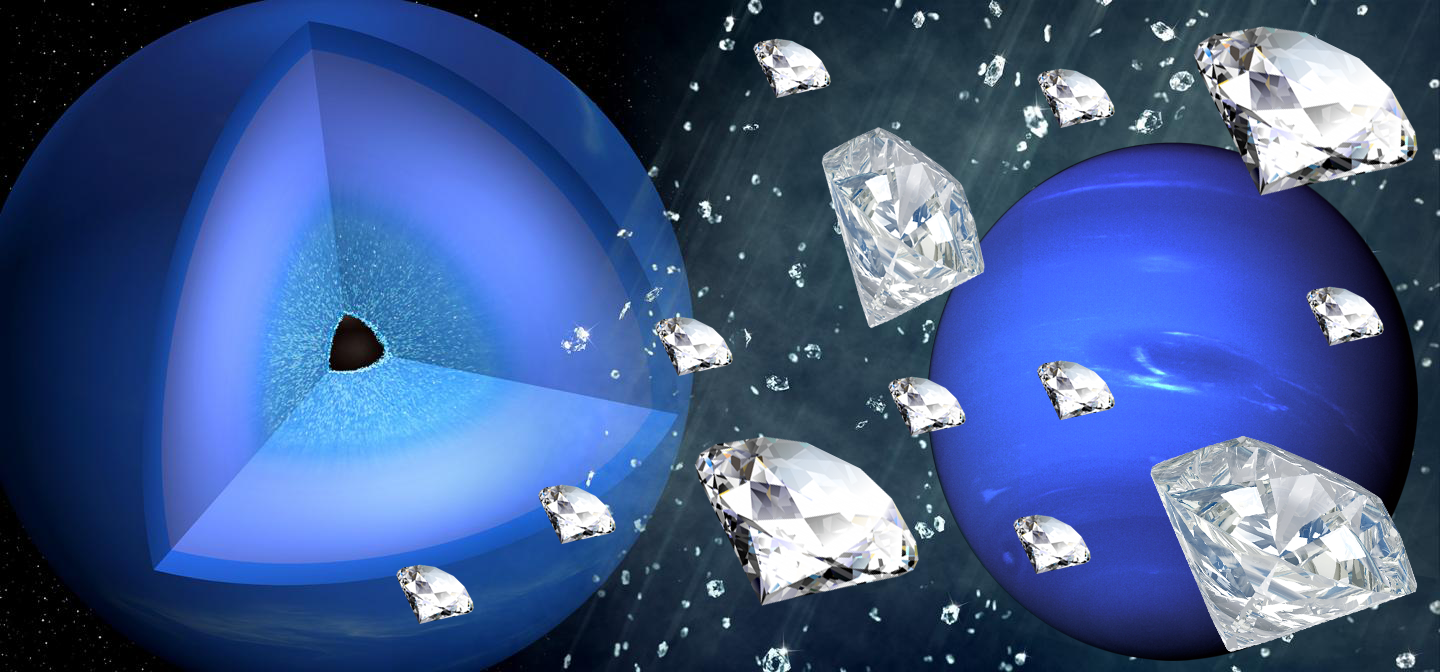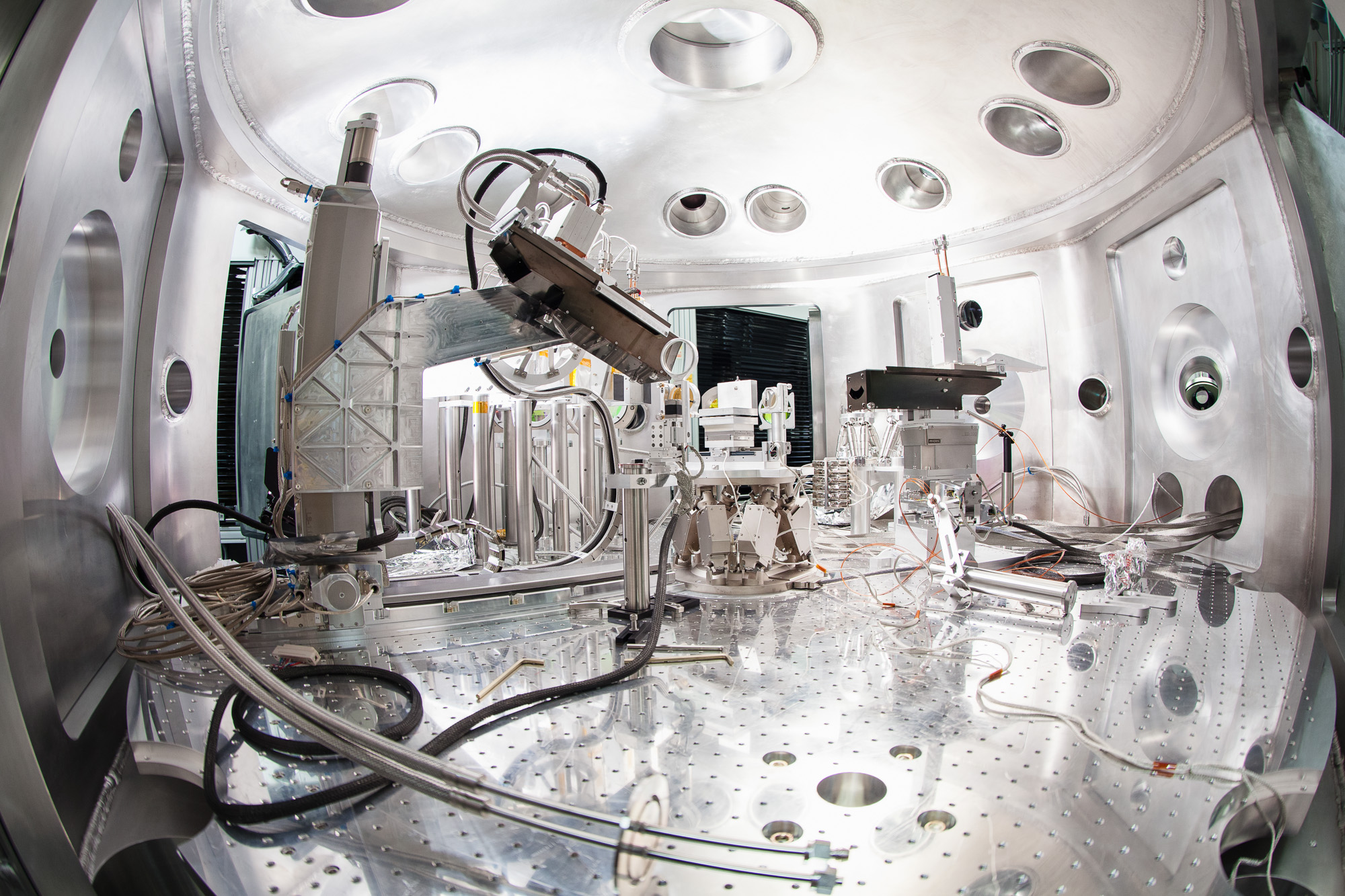Science & Tech
It Is Literally Raining Diamonds On Neptune

For the first time, lab experiments have provided strong evidence for the existence of “diamond rain” in the interior of “ice giant” planets Uranus and Neptune. The diamond rain was generated in a lab.
In an experiment performed at the Linac Coherent Light Source, researchers used high temperatures and high pressure to mimic the conditions of Uranus and Neptune, which simulated the formation of “diamond rain.”

The MEC hutch of SLAC’s LCLS Far Experiement Hall. Credit: SLAC National Accelerator Laboratory
Carbon and hydrogen are thought to compress under extreme pressure and heat thousands of miles below the surfaces of Uranus and Neptune, forming diamonds.
The research suggesting this goes back about 30 years. It was theorized that the diamonds would sink through the layers of the ice giants, creating diamond rain that eventually settles around the cores of the planets.
According to Space:
“Researchers simulated the interior of ice giants by creating shock waves in polystyrene (a kind of plastic) with an intense laser at SLAC National Accelerator Laboratory in Menlo Park, California. The polystyrene simulated molecules known as hydrocarbons that are derived from methane, the compound that gives Neptune its blue tint. These hydrocarbons are what diamonds are thought to form from in the high pressures and temperatures in the intermediate layers of ice giants.”
Scientists generated pairs of shock waves with a laser, with the first of each pair being overtaken by its stronger counterpart. When the 2 waves overlapped, diamonds actually formed with pressure “about 1.48 million times greater than Earth’s atmospheric pressure at sea level,” with the temperature of about 8,540 degrees Fahrenheit (4,725 degrees Celsius).
The experiments are said to resemble the environments about 6,200 miles (10,000 kilometers) below the surfaces of Uranus and Neptune.
The study’s lead author Dominik Kraus said:
“It was very surprising that we got such a clear diamond signature and that the diamonds formed so quickly.
I was expecting to look for very tiny hints in the data, and our theorist co-workers actually predicted that it might be impossible to observe diamond formation in our experiment. I already prepared my team for a very difficult experiment and data analysis. But then, the data was just incredibly clear from the first moments in the experiment.”
As the diamonds formed in the experiment, scientists observed them with fast, intense pulses of X-rays 50 femtoseconds long. Compared to a camera, the “shutter speed” is 50 millionths of a billionth of a second, able to capture fast moving chemical reactions.
In the experiments, they observed that almost every carbon atom of the plastic was incorporated into very small diamonds, up to a few nanometers wide. They concluded that on Uranus and Neptune, giant diamonds could form that are possibly millions of carats large (one carat is 200 milligrams).
Kraus continued:
“The diamonds created in ice giants and our experiment are certainly not gem-quality cut and polished brilliants.” He said that they are probably spherical diamonds with impurities.
“Some models predict that the temperature around the core may be high enough that diamond would melt, forming underground seas of liquid metallic carbon, maybe with some diamond ‘icebergs’ swimming on top. This could help to explain the unusual magnetic fields of Uranus and Neptune. However, most models suggest that diamond would remain solid around the cores of Neptune and Uranus,” Kraus added.
(Image credit: eurekalert, deviant art, wiki)
Typos, corrections and/or news tips? Email us at Contact@TheMindUnleashed.com
